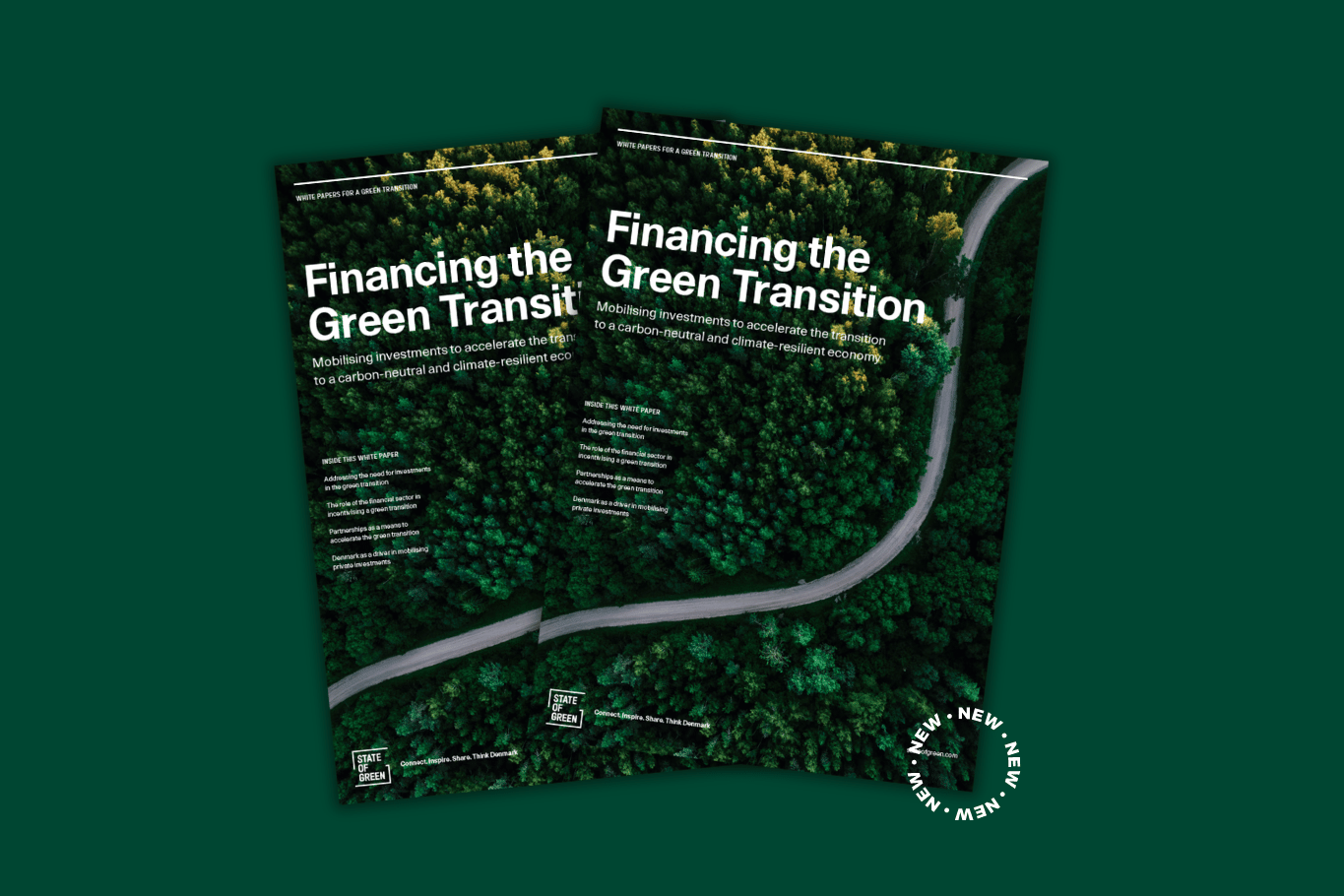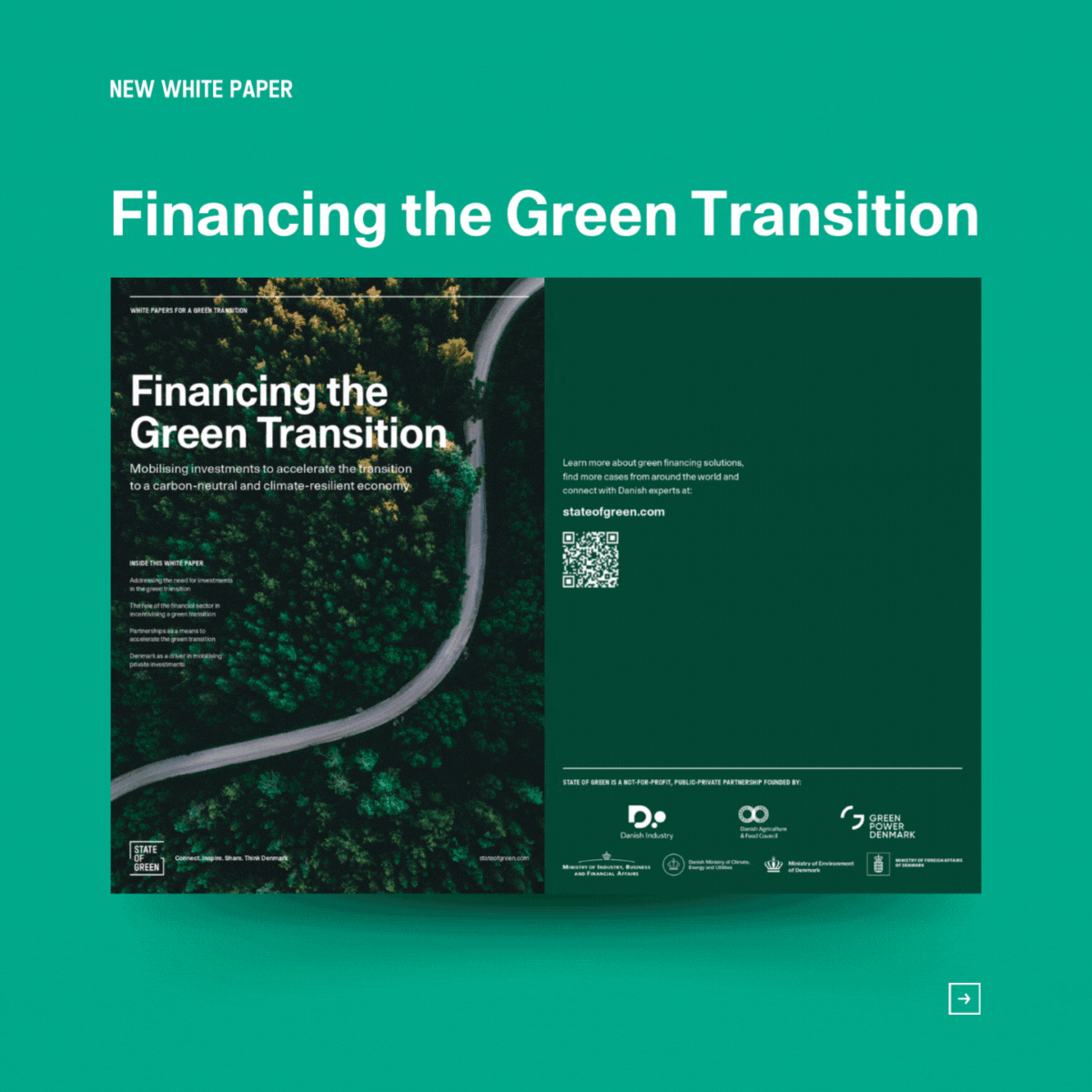Financing the green transition
Download the white paper and get inspired on how to mobilise investments to accelerate the transition to a carbon-neutral and climate-resilient economy.
Explore the white paperNews
Green financing
Biodiversity
Climate COP
+2



Download the white paper and get inspired on how to mobilise investments to accelerate the transition to a carbon-neutral and climate-resilient economy.
Explore the white paperLimiting global warming to the 1.5°C pathway of the Paris Agreement requires substantial investments at a global level. According to the International Energy Agency’s (IEA) Net Zero Roadmap from 2023, global investments in clean energy will have to reach USD 4.5 trillion per year by 2030 to reach that goal. Furthermore, the IEA estimates that USD 3 trillion of the global clean energy-related investments needed by 2030 must come from the private sector, mobilised by the public policies that create incentives, set appropriate regulatory frameworks and send market signals.
“For the world to avoid the worst impact of climate change, we need a transformation of the global economy and energy systems on the scale of the industrial revolution, but at the pace of the digital revolution. Every public and private entity, from national governments to local businesses, must begin implementing credible plans for transitioning to a low-carbon, climate-resilient future.” Mark Carney, UN Special Envoy on Climate Action and Finance
As world-leaders, climate experts and public solution providers gather in Dubai for COP28, State of Green launched the white paper on “Financing the green transition”, intending to share insights, know-how and tangible solutions from Denmark’s green transition.
The white paper was launched at two events during Finance Day on December 4. The first event was at the Bloomberg Hub on a morning briefing event. Here Danish delegates were gathered for a condensed walk-through of Bloomberg NEF’s latest energy outlook, pinpointing pathways for the power, transport, industry, buildings, and agriculture sectors to adapt to the energy transition.
Later, the white paper was launched at the event on “Financing the Global Green Transition” held at Denmark Pavilion together with Solution for Our Climate (SFOC). Together with leaders from Korea, the UK, Denmark, among others, the event aimed at facilitating a discussion on how to mobilize both public and private finance to achieve the goals set out in the Paris Agreement in a socially just manner, thereunder the regulatory framework and public-private partnerships.
With the green transition requiring large investments in infrastructure to transform energy systems and ensure resiliency for a future of extremes, mobilisation of capital for nature and biodiversity conservation, the white paper aims to accelerate the establishment of a regulatory environment that warrants green investments for a more sustainable and just future for all.
“Financing the green transition” gathers several best practice examples from Denmark and worldwide on how to bridge the investment gap and make the green transition happen. With a combination of perspectives and cases from both public and private partners and financial institutions, the publication touches upon the importance of addressing the needs for investments and partnerships, as well as the role that the financial sector and private investments play in the green transition.
We hope that the white paper can help address the need for investments in the green transition and inspire further global action at a faster pace and scale towards 2030.
Explore the role of the financial sector in incentivising a green transition
Learn about how partnerships can act as a means to accelerate the green transition
Understand Denmark’s position as a driver in mobilising private investments
Explore public-private partnerships and tangible solutions to financing the green transition
Download the publication